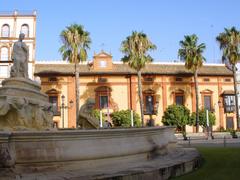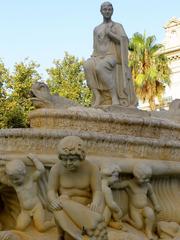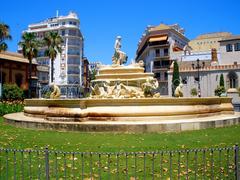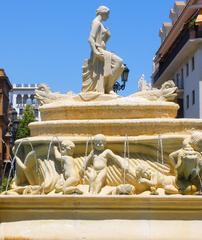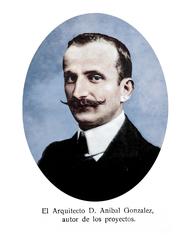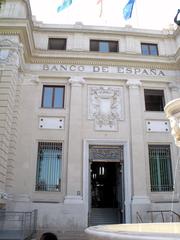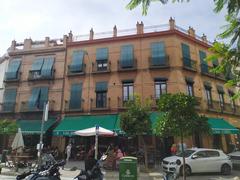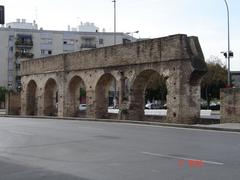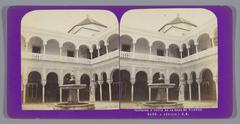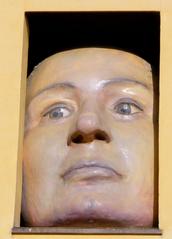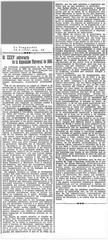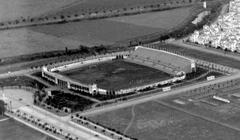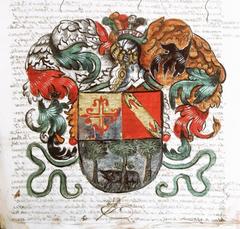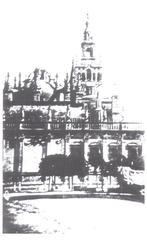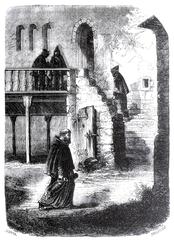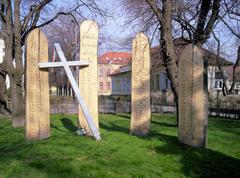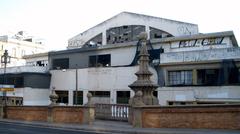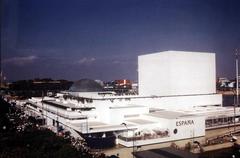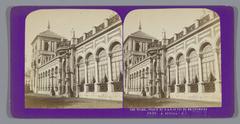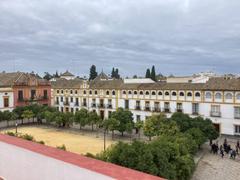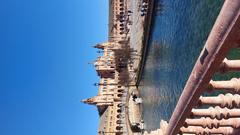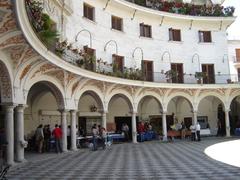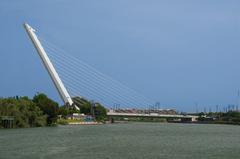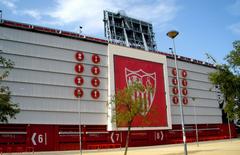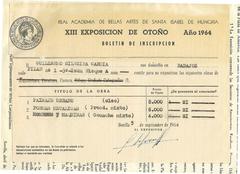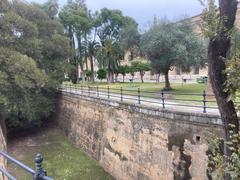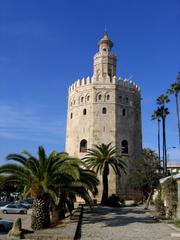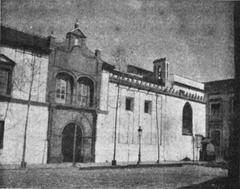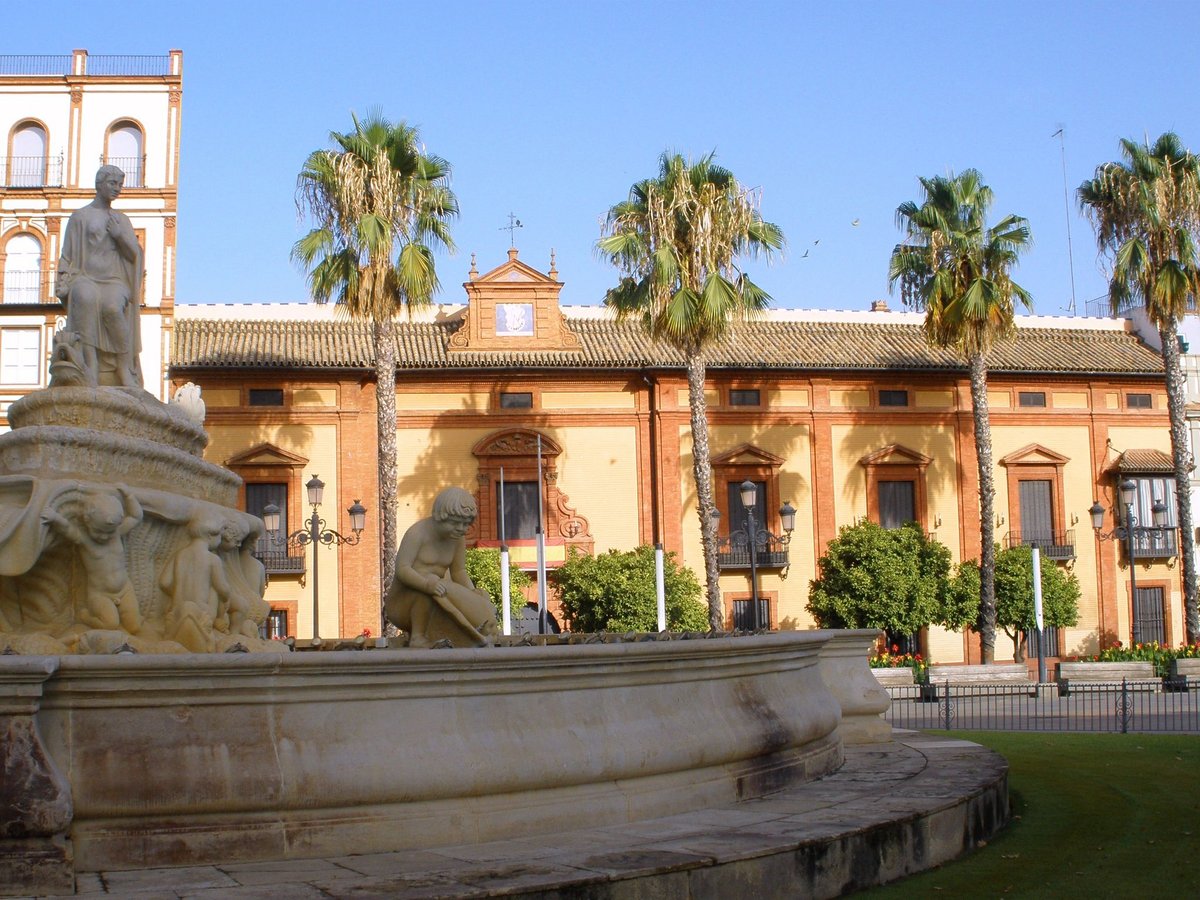
Visiting Fuente de Híspalis: A Comprehensive Guide to Seville’s Historical Monument
Date: 23/07/2024
Introduction
Nestled in the historic heart of Seville, Spain, the Fuente de Híspalis stands as a testament to the city’s rich cultural and historical heritage. This iconic fountain, located in the Plaza de San Francisco, is a significant landmark that draws visitors from around the globe. Known for its intricate Renaissance design and symbolic sculptures, the Fuente de Híspalis offers a glimpse into Seville’s storied past, from its Roman origins to its flourishing during the Renaissance era. Constructed in 1929 for the Ibero-American Exposition, the fountain was designed by the esteemed Spanish sculptor Manuel Delgado Brackembury. Its central column, adorned with detailed carvings and statues representing the four cardinal virtues, reflects the artistic and architectural trends of the time (Visit Seville). Whether you are a history buff, an art enthusiast, or simply a traveler looking to experience the charm of Seville, the Fuente de Híspalis is a must-visit destination.
Table of Contents
- [History of Fuente de Híspalis](#history-of-fuente-de-híspalishistory-of-fuente-de-híspalis)
- [Origins and Early History](#origins-and-early-historyorigins-and-early-history)
- [Renaissance Influence](#renaissance-influencerenaissance-influence)
- [Construction and Design](#construction-and-designconstruction-and-design)
- [Symbolism and Cultural Significance](#symbolism-and-cultural-significancesymbolism-and-cultural-significance)
- [Restoration and Preservation](#restoration-and-preservationrestoration-and-preservation)
- [Visitor Information](#visitor-informationvisitor-information)
- [Visiting Hours](#visiting-hoursvisiting-hours)
- [Tickets and Admission](#tickets-and-admissiontickets-and-admission)
- [Travel Tips](#travel-tipstravel-tips)
- [Nearby Attractions](#nearby-attractionsnearby-attractions)
- [Accessibility](#accessibilityaccessibility)
- [Special Events and Guided Tours](#special-events-and-guided-toursspecial-events-and-guided-tours)
- [Frequently Asked Questions (FAQ)](#frequently-asked-questions-faqfrequently-asked-questions-faq)
- [Conclusion](#conclusionconclusion)
- [References](#referencesreferences)
History of Fuente de Híspalis
Origins and Early History
The Fuente de Híspalis, located in the heart of Seville, Spain, is a significant landmark with a rich historical background. The fountain’s name, ‘Híspalis,’ is derived from the ancient Roman name for Seville, indicating its deep-rooted historical significance. The origins of the fountain can be traced back to the Roman era when Seville was an important city in the Roman province of Hispania Baetica. During this period, the city was known for its intricate network of aqueducts and public fountains, which were essential for urban life and hygiene.
Renaissance Influence
The current structure of the Fuente de Híspalis, however, is not from the Roman era but was constructed much later. The fountain as we see it today was designed in the Renaissance style, reflecting the artistic and architectural trends of the time. The Renaissance period in Seville was marked by a revival of classical art and architecture, influenced by the city’s prosperity due to its role as a major port for trade with the Americas. The fountain’s design incorporates elements typical of Renaissance art, such as symmetry, proportion, and the use of classical motifs.
Construction and Design
The Fuente de Híspalis was constructed in the early 20th century, specifically in 1929, as part of the Ibero-American Exposition held in Seville. This exposition was a world’s fair intended to showcase the cultural and economic achievements of Spain and its former colonies in Latin America. The fountain was designed by the renowned Spanish sculptor Manuel Delgado Brackembury, known for his work in public monuments and fountains.
The design of the Fuente de Híspalis features a central column adorned with intricate carvings and sculptures. At the top of the column is a statue representing Híspalis, the personification of the city of Seville. Surrounding the central column are four smaller statues representing the four cardinal virtues—Prudence, Justice, Fortitude, and Temperance. These virtues were commonly depicted in Renaissance art and were considered essential qualities for a just and moral society.
Symbolism and Cultural Significance
The Fuente de Híspalis is not just a decorative fountain but also a symbol of Seville’s rich cultural heritage and historical significance. The central figure of Híspalis represents the city’s enduring legacy and its importance as a cultural and economic hub throughout history. The inclusion of the four cardinal virtues reflects the Renaissance ideals of humanism and the belief in the importance of moral and ethical values.
The fountain also serves as a reminder of Seville’s role in the Age of Exploration and its connections to the New World. The Ibero-American Exposition, for which the fountain was constructed, celebrated the shared history and cultural ties between Spain and Latin America. The fountain, therefore, stands as a testament to Seville’s historical connections to both its Roman past and its colonial legacy.
Restoration and Preservation
Over the years, the Fuente de Híspalis has undergone several restoration and preservation efforts to maintain its structural integrity and aesthetic appeal. The fountain is made of stone and marble, materials that are susceptible to weathering and erosion over time. Regular maintenance is essential to preserve the intricate carvings and sculptures that adorn the fountain.
In recent years, the city of Seville has undertaken significant restoration projects to ensure the fountain remains a prominent and well-preserved landmark. These efforts have included cleaning and repairing the stonework, restoring damaged sculptures, and implementing measures to protect the fountain from environmental damage. The restoration projects have been carried out with great care to preserve the historical and artistic integrity of the fountain.
Visitor Information
Visiting Hours
The Fuente de Híspalis is accessible to visitors 24 hours a day. However, the best time to visit is during daylight hours when the intricate details of the fountain are clearly visible. Evening visits are also popular as the fountain is often beautifully illuminated.
Tickets and Admission
There is no admission fee to visit the Fuente de Híspalis. It is freely accessible to the public, allowing both locals and tourists to enjoy this historical landmark without any cost.
Travel Tips
- Best Time to Visit: Spring and autumn are the best times to visit Seville, offering pleasant weather for exploring the city and its landmarks.
- Photography: The fountain is a popular spot for photography. Early morning or late afternoon light provides the best conditions for capturing stunning photos.
- Local Etiquette: Be respectful of the monument and avoid climbing or touching the sculptures to help preserve the fountain for future generations.
Nearby Attractions
- Seville Cathedral: One of the largest and most impressive cathedrals in the world, located just a short walk from the fountain.
- Real Alcázar: A royal palace with stunning gardens and intricate Moorish architecture, also nearby.
- Plaza de España: A magnificent square featuring a large, semi-circular building with a central fountain and canal.
Accessibility
The Fuente de Híspalis is located in the Plaza de San Francisco, a central square in the historic heart of the city. The area is easily accessible by foot, public transport, and is wheelchair-friendly. There are several benches around the fountain where visitors can rest and take in the view.
Special Events and Guided Tours
The Fuente de Híspalis often features in guided tours of Seville, providing historical context and interesting anecdotes about the monument. Special events, such as local festivals and cultural celebrations, often include the fountain in their itinerary, enhancing the visitor experience.
Frequently Asked Questions (FAQ)
What are the visiting hours for Fuente de Híspalis? The Fuente de Híspalis is accessible to visitors 24 hours a day.
Are there guided tours available? Yes, the fountain is included in many guided tours of Seville.
Is there an admission fee? No, visiting the Fuente de Híspalis is free of charge.
What is the best time to visit? Spring and autumn offer the most pleasant weather for visiting Seville and its landmarks.
Conclusion
The Fuente de Híspalis is a beloved symbol of Seville’s rich cultural heritage and historical significance. Whether you’re interested in its historical background, artistic design, or simply looking for a beautiful spot to relax, this fountain is a must-visit. For more information on the Fuente de Híspalis and other historical sites in Seville, visit the official Seville Tourism website. Stay up to date with the latest travel tips and local events by following us on social media and checking out our related posts.
References
- Visit Seville, 2024, Seville Tourism https://www.visitasevilla.es/en
- GetYourGuide, 2024, GetYourGuide https://www.getyourguide.com/
